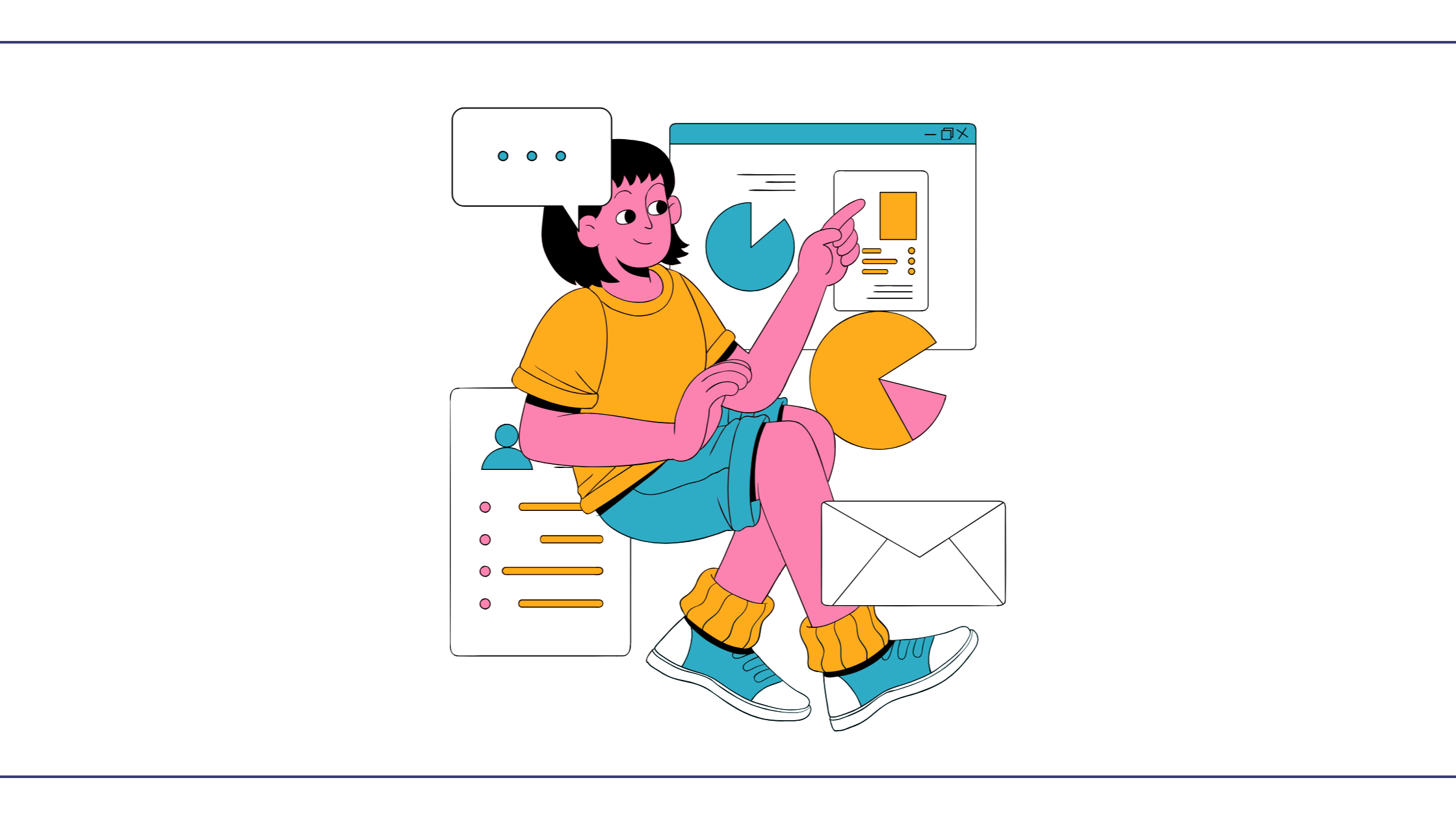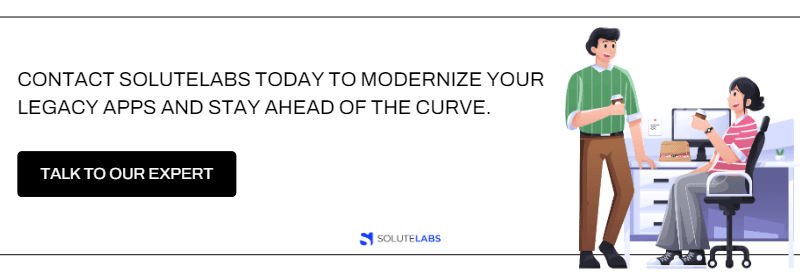In today's fast-paced digital world, businesses must be agile and adaptable to keep up with the competition. However, many organizations are burdened with legacy applications that are outdated, inefficient, and difficult to maintain. These legacy apps are not only a drain on resources but can also lead to technical debt, which can negatively impact the organization's performance and growth. In this blog, we will discuss how modernizing legacy apps can reduce technical debt and help businesses stay ahead of the curve.
What is Technical Debt?
Technical debt refers to the accumulated costs and risks associated with maintaining and supporting outdated software systems or applications. This debt accumulates over time, as new features and functionalities are added to the software, making it more complex and difficult to maintain.
Technical debt can be caused by various factors, such as:
- Poor design and architecture
- Lack of documentation
- Use of outdated technologies
- Inadequate testing and quality assurance
- Rushed development timelines
Technical debt can occur in various forms, such as:
- System crashes and downtime
- Slow performance and inefficiency
- Security vulnerabilities
- Inability to adapt to changing business needs
- High maintenance and support costs
What are Legacy Apps?
Legacy apps are software applications that were developed using outdated technologies and are no longer supported by their original creators. These apps are often critical to the organization's operations but are difficult to maintain and upgrade due to their age and complexity. Legacy apps can be identified by their characteristics, such as:
- Older programming languages and frameworks
- Monolithic architecture
- Limited integration capabilities
- Lack of scalability
- Inefficient and slow performance
Risks of using legacy apps include:
- Security vulnerabilities due to outdated software and hardware dependencies
- Inability to meet modern business needs
- High maintenance and support costs
- Difficulty in finding skilled resources to maintain and upgrade legacy apps
Also, Read: Software Quality Metrics and KPIs: Choose the Right Metrics
Benefits of Modernizing Legacy Apps
Modernizing legacy apps can bring significant benefits to the organization, such as:
1. Improved Performance and Efficiency:
Modernizing legacy apps can lead to improved performance and efficiency, as newer technologies and architectures are used to optimize the app's codebase and functionality.
2. Enhanced Security:
Legacy apps are often vulnerable to security breaches due to outdated software and hardware dependencies. Modernizing legacy apps can improve security by incorporating the latest security protocols and features.
3. Better User Experience:
Modernizing legacy apps can lead to a better user experience by incorporating modern design principles and user interface technologies.
4. Reduced Maintenance and Support Costs:
Legacy apps require more maintenance and support than modern apps, as they are more complex and difficult to upgrade. Modernizing legacy apps can lead to reduced maintenance and support costs, as newer technologies and architectures are used to streamline the app's codebase and functionality.
5. Compatibility with Modern Technologies:
Legacy apps often face compatibility issues with modern technologies and hardware. Modernizing legacy apps can ensure compatibility with modern technologies, allowing the organization to stay ahead of the curve.
Challenges of Modernizing Legacy Apps
Modernizing legacy apps can be a complex and challenging process, as legacy apps often have a complex codebase and limited documentation. Some of the challenges of modernizing legacy apps include:
1. Legacy Codebase Complexity:
Legacy apps often have a complex codebase that is difficult to understand and modify. This complexity can make modernizing legacy apps a time-consuming and expensive process.
2. Lack of Documentation:
Legacy apps often lack proper documentation, making it difficult for developers to understand the app's functionality and architecture. This lack of documentation can lead to errors and delays in the modernization process.
3. Outdated Hardware and Software Dependencies:
Legacy apps often have dependencies on outdated hardware and software, making it difficult to modernize them without upgrading the underlying infrastructure.
4. Resistance to Change:
Legacy apps are often deeply ingrained in the organization's processes and culture, making it difficult to convince stakeholders to invest in modernizing them.
Strategies for Modernizing Legacy Apps
To modernize legacy apps, organizations can adopt one of the following strategies:
1. Replatforming:
Replatforming involves migrating the legacy app to a modern platform that is better suited for the organization's current and future needs. This approach is less risky than rebuilding the app from scratch and can be completed quickly.
2. Refactoring:
Refactoring involves improving the app's codebase and architecture without changing its functionality. This approach is ideal for organizations that want to modernize their legacy apps gradually and without disrupting their operations.
3. Rebuilding:
Rebuilding involves creating a new app from scratch that replaces the legacy app entirely. This approach is ideal for organizations that want to modernize their legacy apps completely and have the resources and time to do so.
4. Retiring:
Retiring involves decommissioning the legacy app entirely and replacing it with a modern alternative. This approach is ideal for organizations that want to eliminate the risks associated with maintaining and upgrading legacy apps.
For our client Synergy, the fifth largest marine company in the world, we migrated 1 million+ legacy data of seafarers and their related data to Cloud for better availability and access. They were originally using old legacy systems on their ships to keep data for seafarers and ships. This was slow, complex, and also not easily accessible everywhere. SoluteLabs is currently developing new apps like -
1. Ahoy (Seafarer App):
A mobile application developed for seafarers to manage their end-to-end work experience, documents, LARP, and profile.
2. Seafarer App (Web App):
The sourcing team uses this app to create and manage the database of all seafarers, including those who sign up on the Ahoy app and those added manually.
3. Vessel App (Web App):
A vessel management solution that manages the vessel's basic and technical details, fleet management, and voyage-ship traveling history.
Best Practices for Modernizing Legacy Apps
To ensure a successful modernization project, organizations should follow these best practices:
1. Conducting a Comprehensive Assessment:
Organizations should conduct a comprehensive assessment of their legacy app's codebase, architecture, and functionality to identify areas that need modernization.
2. Prioritizing Features and Functionalities:
Organizations should prioritize the app's features and functionalities that are critical to their operations and modernize them first.
3. Implementing Agile Development Methodologies:
Organizations should implement Agile Development Methodologies that prioritize collaboration, flexibility, and continuous improvement.
4. Incorporating Automated Testing and Quality Assurance:
Organizations should incorporate automated testing and quality assurance tools to identify and fix issues early in the development cycle.
5. Providing Adequate Training and Support:
Organizations should provide adequate training and support to their employees to ensure a smooth transition to the modernized app.
Choosing the Right Partner for Legacy Apps Modernization
Choosing the right partner for legacy apps modernization is crucial to the project's success. Organizations should consider the following factors when selecting a partner:
Expertise:
The partner should have expertise in modernizing legacy apps using the latest technologies and best practices.
Experience:
The partner should have experience in modernizing legacy apps in the same or similar industry as the organization.
Reputation:
The partner should have a good reputation in the industry, with a track record of successful legacy apps modernization projects.
Communication:
The partner should have good communication skills and keep the organization informed about the project's progress and any issues that arise.
Flexibility:
The partner should be flexible and able to adapt to the organization's changing needs and requirements.
Pricing:
The partner's pricing should be transparent and competitive, with no hidden fees or charges.
Questions to ask when selecting a partner include:
- What is your experience in modernizing legacy apps?
- What methodologies do you use for modernizing legacy apps?
- What is your process for identifying areas that need modernization in a legacy app?
- How do you ensure quality and security in modernized legacy apps?
- How do you handle documentation and training for modernized legacy apps?
- Can you provide references from other organizations that have modernized their legacy apps with your services?
The due diligence process should involve conducting a thorough evaluation of the partner's capabilities, experience, and reputation, and checking their references and reviews from other organizations that have worked with them.
Also, Read: How to Find the Right Software Development Partner in 2023
Conclusion
Modernizing legacy apps is essential for organizations to stay competitive in today's digital world. Legacy apps can lead to technical debt, which can negatively impact the organization's performance and growth. Modernizing legacy apps can bring significant benefits to the organization, such as improved performance and efficiency, enhanced security, better user experience, reduced maintenance and support costs, and compatibility with modern technologies. However, modernizing legacy apps can be a complex and challenging process, and organizations should follow best practices and partner with a reputable software development firm to ensure a successful modernization project.
At SoluteLabs, we specialize in modernizing legacy apps using the latest technologies and best practices. Our team of experienced developers and engineers can help your organization modernize its legacy apps and stay ahead of the curve. Contact us today to learn more about our services and how we can help your organization modernize its legacy apps.








